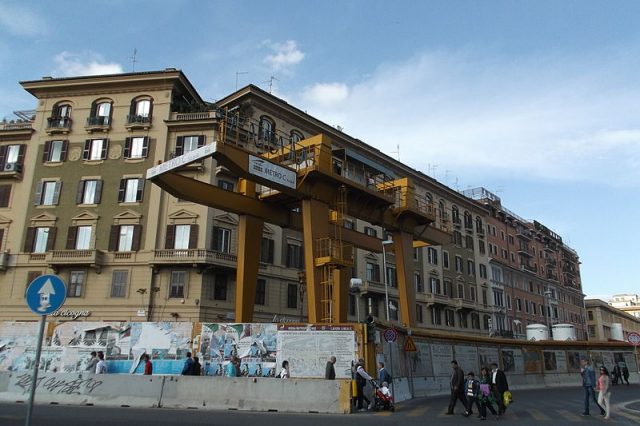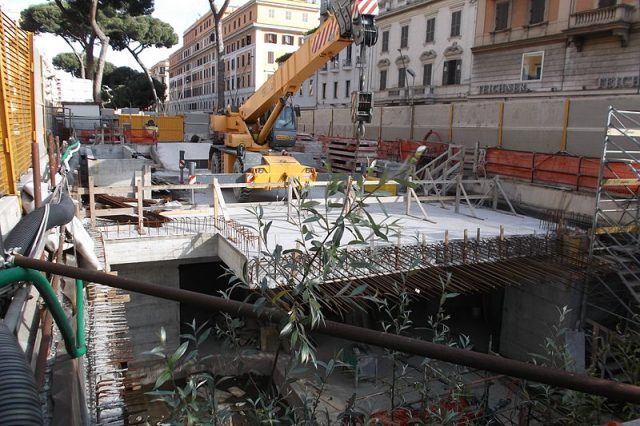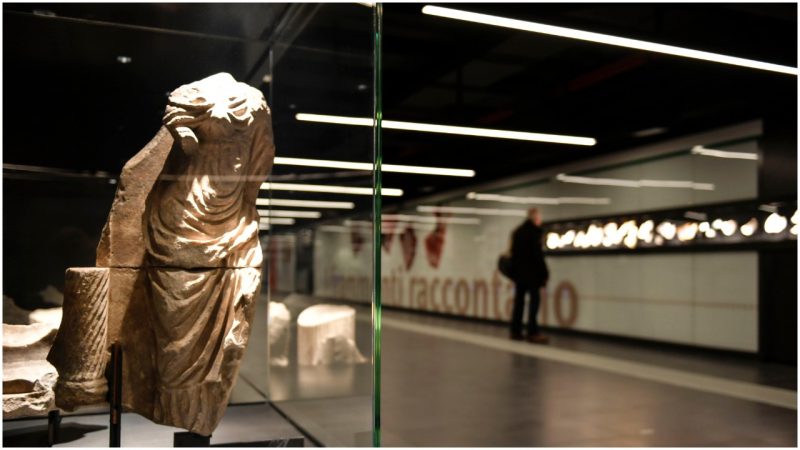For archaeologists, 2017 has been a year of astounding discoveries. It was a year in which the world saw some striking dinosaur fossil finds, such as the case of Halszkaraptor escuilliei. This dinosaur, with its swan-like neck and crocodile teeth, once thrived in modern-day Mongolia. It walked like a duck and swam like a penguin, paleontologists have said.
As astounding as some of the finds were on soil, other discoveries of note were made underwater. Archaeologists working underwater off the southern coast of Greece have managed to identify long-lost parts of a port that once belonged to the ancient city of Corinth. In Ancient Rome, this counted as a particularly important harbor that connected the Greek coastline with other hot spots on the Mediterranean. And after five years of surveying the area, archaeologists finally came across astonishing examples of ancient Roman engineering.
Since we mentioned the Romans, the year-round review of archaeological announcements and findings cannot be wrapped up without the news from the Italian capital itself. There, for the past 10 years, artifacts keep coming to light as engineering efforts advance in building the city of Rome a brand new subway section. For archaeological teams, this has been an opportunity as never seen before, revealing artifacts from all epochs of the Eternal City.

“This subway has provided a wealth of knowledge about the city that no other operation could have duplicated,” were the words of Rossella Rea, an archaeologist who has been following the subway construction project for many years.
People of Rome are particularly hyped about the new section, named Line C, a route that is to link the center of the capital with parts that extend on the east. The first sections of this line were opened as early as 2014, with the hope of relieving traffic issues for residents. The line is also to connect new, densely populated areas of the capital.
Meanwhile, artifacts keep appearing. Just at the end of 2017, the New York Times reported on the newest findings that have emerged amid the line construction activities. Reportedly, these include ancient Persian petrified peach pits, as well as images of a now-extinct species of elephant. These amazing discoveries were found on the site of the new San Giovanni station.
Some artifacts have already been displayed in glass-fronted panels at the San Giovanni station, which is scheduled to start operating early in 2018. The arrangement of the treasures is set to offer a new experience to daily commuters, a journey through the history of the city. Elements exhibited feature ceramic vases and pottery dated to the days of the Roman empire, and also from the Renaissance. Added to that arebronze hooks for fishing, large amphorae, a water fountain for farming, a modern Travertine basin, and the list goes on. As Rossella Rea sums up: “the whole history of Rome is here.”
“We wanted to give a sense of the archaeological study, tell the story of this place, allowing the passenger to travel through time,” said archaeologist Francesco. “We’ve found enough materials to fill a warehouse.”
As the number of artifacts counts many thousands, only a tiny fraction has been selected and displayed at the San Giovanni station. Others are yet to find their place on the shelves of museums, among other places.
Just to give a few more examples of the discoveries from beneath Rome: In 2008, archaeologists announced the discovery of medieval imperial dwellings, which, as it turned out, had remarkably preserved kitchens containing pieces of pots or pans. One of the kitchens reportedly had several sauce-heating pots, dated to the 9th century, that excited archaeologists as a particularly rare find.
That same year, when doing work on a portion of the subway’s Line C, researchers announced stumbling upon a copper factory. It was dated to the 6th century, and similarly to the kitchens, there were well-preserved tools and instruments, including ovens that served for melting copper alloy.
Even earlier-dated findings were announced in 2016, when two millennia old barracks were attributed to the soldiers of the famed Emperor Hadrian. Aside from the remnants of the barracks, a mass grave was also located, which contained the skeletons of 13 people who likely served in the army of the emperor.

Artifacts have been popping up ever since the earliest subway construction efforts commenced in the city, under the dictatorship of Benito Mussolini, as early as 1937 (though no subway line opened in his days). Unlike his colleague Hitler, who was fond of collecting treasured items, rumor has it that Mussolini did not stress himself too much over artifacts, as workers on the subway destroyed the many historical items they happened to encounter.
Related story from us: Via Egnatia – The ancient Roman road that connected Rome with Constantinople
The last 10 years serve as proof that Rome is an endless archaeological resource. It is no different with other mega-cities, London for example, where the modern-day mudlarks in their daily missions retrieve “pieces of history” as they search the foreshores of the River Thames. From shards of Roman pottery to shoes produced in the Tudor period, the river has offered itself as one of the most compelling archaeological sites in the country, similar to what the Rome subway tunnels have become one for Italy.
